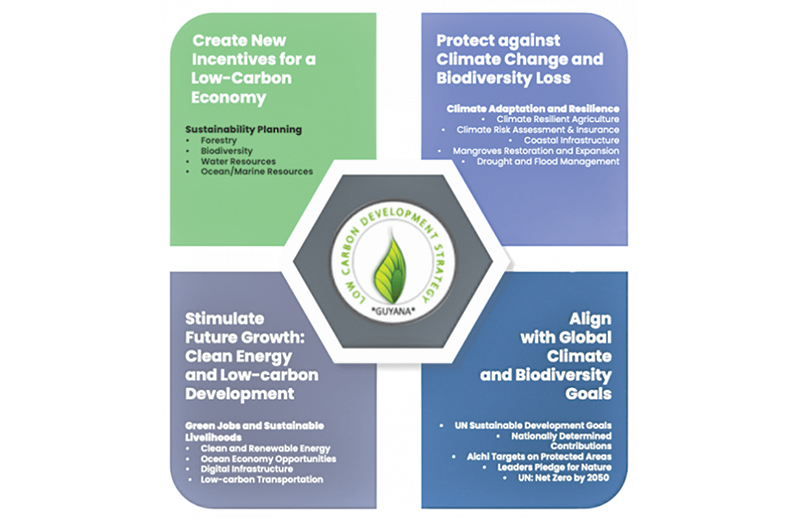GUYANA is one of the few nations globally and the first in the region to establish laws that specifically protect and empower indigenous peoples.
The People’s Progressive Party/Civic (PPP/C) administration has prioritised developing institutions that advance the rights of Amerindians through empowering village-level governance and decision-making, which also supports the regional and national representation of indigenous people’s rights through the National Toshao’s Council (NTC).
In the Amerindian Act of 2006, indigenous villages gained access to land titles, providing resources for village-level development. One of the stand-out provisions of this Act is the provision that grants Amerindian villages subsurface rights for small and medium-sized mining activities.
In ensuring that the indigenous people are always protected, the PPP/C government has also taken the lead in drafting constitutional clauses establishing the Indigenous Peoples Commission (IPC). This historic action demonstrates the importance that Guyana’s government attaches to the development of the indigenous peoples and ensures that it is protected to the fullest extent possible by the Constitution.
EMPOWERED AT THE VILLAGE LEVEL
According to the laws of Guyana that govern the indigenous peoples, the NTC is the national organisation that represents all the indigenous villages in the country. The NTC is comprised of elected leaders from villages.
The National Toshao’s Council, through the Amerindian Act, outlines the NTC’s role and responsibilities in Part IV, Sections 38 through 43 of the Act. The Toshao’s and Village Council, a larger body elected by villagers to govern the affairs of the village, is headed by the village Toshao, and is elected at the village level. As a result, Toshaos attend NTC meetings on behalf of their villages.
According to Section 41(h) of the Amerindian Act, Part IV, the duties of the NTC are listed as “co-ordinating and integrating the activities of the villages on a national basis” and “preparing strategies and plans for the protection, conservation, and sustainable management of village lands and natural resources.” Section 41(e) lists the duties as “preparing strategies and plans for the protection, conservation, and sustainable management of village lands and natural resources.” By virtue of the provisions of Part IV of the Act, particularly Section 41(h), these legislative measures collectively entrench the NTC’s authority to spearhead, direct, and support the national strategies and programmes, including those of the Low Carbon Development Strategy (LCDS) 2030, which has opened up opportunities for carbon financing in Guyana.
PIONEERING A GLOBAL MODEL FOR FORESTS
Under successive PPP/C administrations, expanding resource availability to villages by valuing the protection of forests has been a tremendous success.
With incremental work over the last 12 years, starting under the Guyana Norway Bilateral Co-operation in 2009 on climate and forests, pioneered by then President Dr. Bharrat Jagdeo (current Vice President), Guyana earned approximately US$220 million that was invested in low-carbon livelihood programmes including at the village level.
Dr. Jagdeo not only pioneered the structure of the model for a country like Guyana that has protected forests, but he also showed how the model could translate into immediate benefits for indigenous villages.
EXPANDING RESOURCE FOR AMERINDIAN VILLAGES
Moving to the second phase of the LCDS, Guyana launched LCDS 2030 in October 2021. National consultation from October 2021 to July 2022 saw the original LCDS expanded and enhanced, culminating in the endorsement of the National Assembly and then the finalisation of LCDS 2030.
In November 2022, Guyana issued the world’s first jurisdiction-scale, sovereign carbon credits as the next phase in Guyana’s creation of a global model for forest climate services. This was followed shortly afterwards by the world’s first sale of such credits in global carbon markets.
After the seven-month national consultation on LCDS 2030, it was agreed that 15 per cent of all revenues received from the sale of carbon credits would be paid directly to indigenous and local communities across Guyana. Since February 2023, communities nationwide have been working on village plans that express the development needs of the villages and for which forest carbon financing will be channeled. There will also be investments from the remaining 85 per cent of revenues into multi-community and national programmes and initiatives.
UNPARALLELED DEVELOPMENT OF AMERINDIAN VILLAGES
Undoubtedly, the greatest support for Amerindian villages has been under successive PPP/C administrations. The PPP/C Government has a proven track record of investing in indigenous villages in infrastructure, ICT access, water supply, electricity in the hinterland, health, and education. Every village participates in identifying needs, and annual budgeted allocations gradually address those requirements. In addition, the village’s development would also benefit from presidential grants and the current funding from the sale of carbon credits.
In February 2023, indigenous peoples and local communities across the nation received a total of $22.5 million and are using their village-led processes to decide whether and how to use these resources to improve their own villages and communities. There is now a lot of support for turning this progress into tangible results and impact.
The PPP/C Government continues to work with all stakeholders in implementing these programmes – implementation that will see this first series of investments made under LCDS 2030, bringing about impactful results on sustainable livelihoods and low carbon development in every Amerindian village.
(This is part of a weekly series on LCDS.) The author can be contacted at [email protected])



